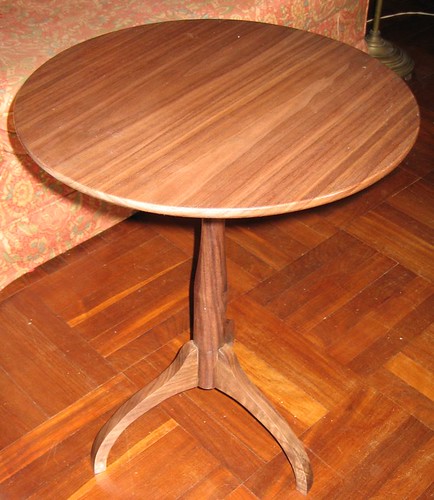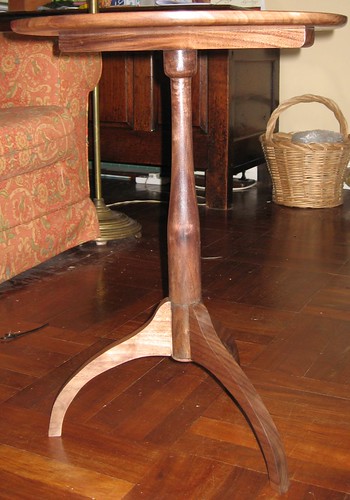TobyB
Established Member
Some advice please ...
Just completed a small table for a Xmas present. Now wondering if I've done things right, or could have done them better?


Thinking about grain orientation ...
The table top I screwed'n'glued to the cleat with the grain in the same alignment as the cleat, thinking it can expand/contract freely across the grain without splitting. But then I started wondering if the top can now warp, and if it should have been supported by the cleat across the grain? If so, should I have just screwed the top down, and perhaps used slots/ovals rather than round holes for the screws, to allow for movement?
Second thought - I cut the legs with the grain running parallel to the floor, so the dovetails were cut "as normal" if you were making a box, drawer, etc. I thought this would be strongest. But then I started to wonder if I could have made the legs stronger by aligning the grain at roughly 45 degrees to the floor, so it runs along the axis of the leg? Or would that compromise the strength of the dovetail?
Anyone got any thoughts on these questions?
Just completed a small table for a Xmas present. Now wondering if I've done things right, or could have done them better?


Thinking about grain orientation ...
The table top I screwed'n'glued to the cleat with the grain in the same alignment as the cleat, thinking it can expand/contract freely across the grain without splitting. But then I started wondering if the top can now warp, and if it should have been supported by the cleat across the grain? If so, should I have just screwed the top down, and perhaps used slots/ovals rather than round holes for the screws, to allow for movement?
Second thought - I cut the legs with the grain running parallel to the floor, so the dovetails were cut "as normal" if you were making a box, drawer, etc. I thought this would be strongest. But then I started to wonder if I could have made the legs stronger by aligning the grain at roughly 45 degrees to the floor, so it runs along the axis of the leg? Or would that compromise the strength of the dovetail?
Anyone got any thoughts on these questions?

































